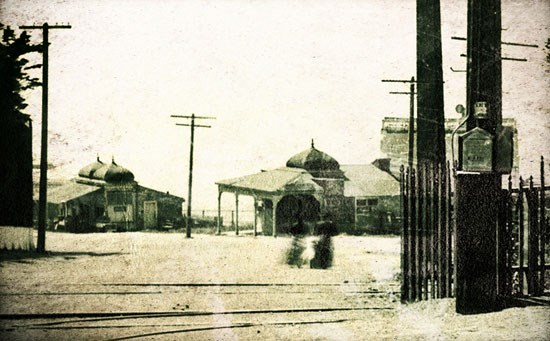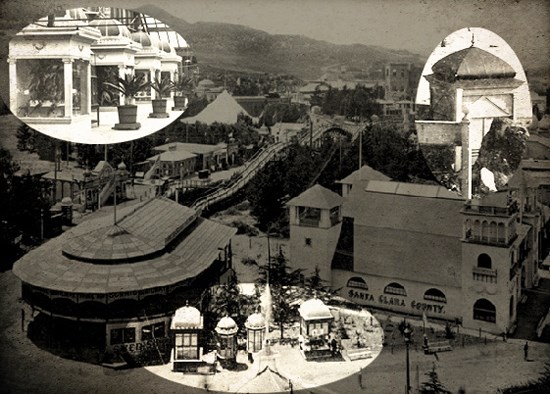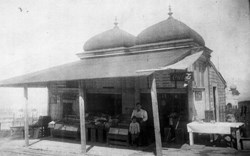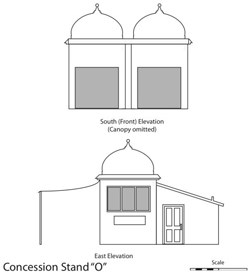Commercial Livelihood at Merrie Way
For Sutro, a major part of his vision for Merrie Way as both a “pleasure ground” and a place of business was to create and support a boisterous market scene. To bring this vision to life, Sutro acquired a number of kiosks from the 1894 Midwinter Fair, the same place where he bought most of the park’s rides. The Midwinter Fair contained over one hundred kiosks, all designed in a vaguely Oriental style. Archeologist studying historic photos learned that most of the kiosks were either circular or square structures. The kiosk’s ornamental trimming were either elaborate floral designs or simple linear and geometric patterns. Some of the buildings were practically all glass with windows on every side, while others had enclosed walls with a single window in front. For their size and relative simplicity, they had a considerable range of individual character.
Sutro planned to use the transplanted kiosk’s in a variety of ways. He moved some of the smaller stands to the Sutro Baths where they were used as display cases. Sutro installed over a dozen of the kiosks at Merrie Way, most in a row along Point Lobos, then known as Cliff Avenue. It was likely that Sutro intended to use a few of the Merrie Way stands in the day-to-day operations of the park, as ticket booths or maintenance sheds. However, Sutro’s general intention was to rent or sell the transplanted kiosks to private vendors. These vendors would set up shop along the avenue and sell food and souvenirs -ranging from peanuts and candy, beer and cigars, souvenirs and trinkets, puppet shows and sit-down dinners - to the visitors flocking to the Sutro Pleasure Grounds, the Sutro Baths and Sutro Heights. The whole area was a true pleasure ground for the many working San Franciscans with a little leisure time and disposable income to spare.




